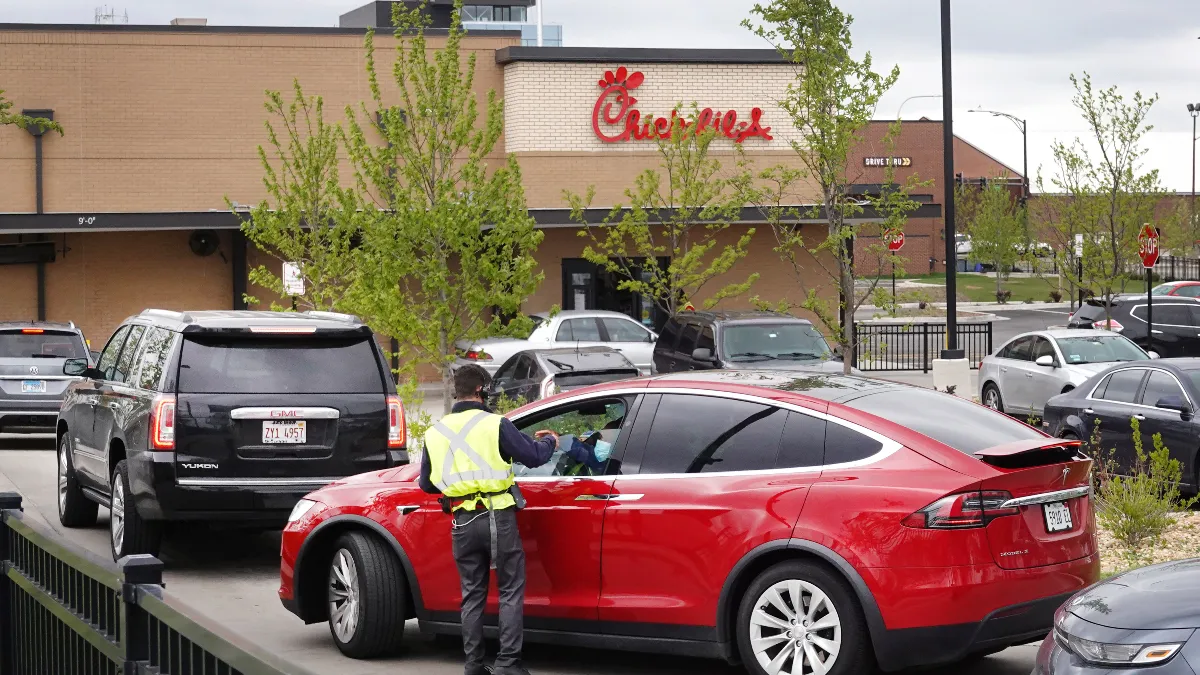Dive Brief:
- Research from JLL's Big Red Rooster shows that only one in five QSR customers feel service has declined in the past six months, despite a challenged labor market and the return of on-premise dining. One in four diners reported improved service during the period.
- Fifty-seven percent of consumers believe that restaurant employees have more control over their dining experience than the restaurant brand itself.
- Only 18% of consumers said that incorporating labor-saving technology is one of the top three things brands can do to improve service. This could put restaurants at odds with diner expectations, as many chains have invested in new technology solutions to ease significant labor pressures plaguing the industry.
Dive Insight:
Most consumers (52%) believe that increasing the number of staff during peak traffic times would create the most positive experiences, while 48% said increasing wages would have the most positive impact, according to Big Red Rooster's report.
The first request is a tall order for chains struggling to attract and retain talent, especially since many operators are fighting to just maintain normal operating hours. But wages are already on the rise — QSR pay jumped 10% in the second quarter, marking the industry's largest quarterly jump in years.
The challenge for operators will be striking the balance between their tech investments and those rising labor costs. While restaurants are finding labor-saving solutions in technology, such as QR codes and self-service kiosks, most consumers prefer working with staff throughout their dining experience, per Big Red Rooster's report. That includes 54% who want help navigating the menu, 59% who want help customizing orders, 50% who want human interaction when paying and 63% who want help receiving the order.
Notably, several concepts are adding labor-saving technologies to the back of the house, including White Castle. Kitchen automation is likely to have less of an impact on customer service and could free up those back-of-the-house employees to redeploy to a customer-facing role and better promote the human interaction most diners still crave.
Still, some tech investments are likely to pay off eventually, as younger consumers are more likely to prefer digital solutions. That said, up to 50% of Gen Z still prefer staff across their QSR experience, per Big Red Rooster.
Just 25% of consumers rated QSR brands as "excellent" in making them feel cared for, Emily Albright Miller, SVP of Strategy at Big Red Rooster, said in a statement.
"Above all, this reiterates the importance of human connection on brand experience," Miller said.
Big Red Rooster points to Chick-fil-A as a case study on striking such a balance. The brand has ranked first in the American Customer Satisfaction Index for the past seven years even as it increases its labor-saving technology solutions, including robot delivery and dine-in mobile ordering. Consumers keep coming back because of how much the brand pays close attention to the overall customer experience, the report said.
Starbucks could provide another example. In the Big Red Rooster report, 45% of consumers said improved coaching and training for employees would improve experiences. Starbucks is using AI to automate tasks like inventory management, for example, yet is simultaneously increasing its investments in customer service training, Chief Operating Officer John Culver said on the chain's Q3 earnings call in July.
"Roughly 70% of our partners have been hired in these last 18 months and they've been operating in this COVID-restricted environment, so we're reinvesting now in customer service training for our partners as customers become more mobile and frequent in our stores," he said.









